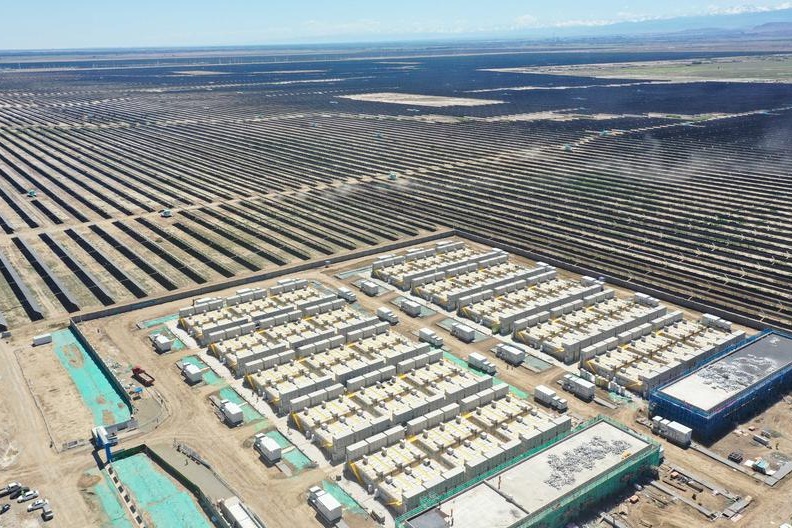New guidelines pave the way for ethical automated driving
Latest rules demand transparency, clear liability as technology advances

China has issued new ethical guidelines for automated driving technology, emphasizing that the priority for automated systems must be the protection of human life — including people inside and outside vehicles — as the technology advances toward commercialization.
In cases of unavoidable traffic accidents or extreme conditions, automated driving systems should highly respect life and actively seek ways to minimize harm, according to the guidelines, which were released by the Ministry of Science and Technology on Wednesday.
The guidelines also call for clear documentation and accessibility to the algorithms, models and related content behind automated driving systems to guarantee the public's right to know. Well-designed risk monitoring and emergency mechanisms should be in place to ensure that those responsible can detect, intervene and manage risks in a timely manner, keeping threats to a reasonable and manageable level.
In China, most of the available self-driving systems that are in the market are classified as level 2 (L2), which require drivers to keep their hands on the wheel at all times. Legally, all drivers are required to be fully alert when driving and take responsibility for the safety of the vehicle even with a driver-assistance system turned on.
Even though the country is actively pushing for the commercialization of L3, Beijing has yet to approve L3 — considered a "hands-off" system, according to standards set by US-based SAE International (Society of Automotive Engineers). The L3 is the first level where the vehicle is considered an "automated driving system" rather than just a driver assistance system.
"Driving automation systems possess technical and social dual attributes. Their technological innovation and commercialization must therefore give full weight to the public's values and ethical concerns," said Gong Ke, executive director of the Chinese Institute of New Generation Artificial Intelligence Development Strategies.
The guidelines clarify liability for different levels of driving automation. In vehicles equipped with combined driver, partial driver and emergency assistance systems, human drivers remain responsible for the driving process and must retain the ability to immediately revoke automated control. For highly or conditionally automated vehicles that can prompt drivers for assistance, liability may fall on system developers, manufacturers or human drivers depending on the circumstances involved.
Fully automated vehicles, the guidelines state, must perform effectively in all driving conditions and demonstrate driving skills and ethical standards equal to or exceeding those of humans. Except in cases where drivers actively intervene, the system is expected to assume full responsibility for safe driving.
The guidelines also emphasize the need for multidimensional testing and systematic verification for fully automated systems, including testing mileage, decision response times and ethical learning mechanisms.
Experts welcomed the guidelines as a step toward strengthening the automated driving technology market and ensuring its development remains people-centered.
Chen Hong, a distinguished professor at Tongji University, pointed out that most vehicles currently available on the market are equipped with driver assistance systems, generally corresponding to the level 2 automation. However, it is widely believed that some leading companies have already developed technologies capable of exceeding level 3 autonomy. She suggested that the release of regulatory guidelines could play a pivotal role in standardizing the automated driving technology market and accelerating its further development.
Luo Xueming, an expert at the Guangdong Modern Urban Industrial Technology Research Institute, said the core challenge in China's automated driving industry has shifted from technological feasibility to institutional credibility.
"Technology developers need to realize that true innovation involves not just creating advanced technologies, but also establishing systems that are socially acceptable, accountable and ethically verifiable," Luo said.
Liu Xilong, an associate researcher at the Institute of Automation of the Chinese Academy of Sciences, described the guidelines as "encouragement for technological innovation and market expansion".
"Automated driving technology in China is now relatively mature compared to when laser radar was expensive and visual navigation algorithms were incomplete," Liu said, adding that the widespread use of current technology could potentially reduce traffic accidents tenfold.
"However, as people remain unfamiliar with this technology, sporadic accidents could trigger social panic, with automated systems blamed without sufficient evidence," Liu said. "By clarifying degrees of automation and responsibility, manufacturers can be motivated to promote cutting-edge products, stimulating further research and development."
Today's Top News
- WIPO: China retains its position as the global leader with 1.8 million patent applications
- Xi sends congratulations to 20th theory seminar between CPC, CPV
- China, Spain to build more strategically resilient, dynamic, internationally influential bilateral ties: Xi
- Xi holds welcome ceremony for Spanish king
- Astronauts' return mission proceeds smoothly
- Vocational education helps youth break the cycle of poverty






























